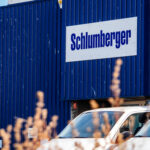Oil & Gas Financial Journal: Every August, investment community professionals throughout North America, and across the Atlantic and Pacific, come together in Denver, Colorado to attend EnerCom’s The Oil & Gas Conference®. While in Denver, these investment professionals hear from and meet some of the industry’s top management teams in the oil and gas industry. The Oil & Gas Conference® 18 was held August 11-15, 2013, hosting 112 E&P and oil services companies with enterprise values ranging from $7 million to more than $230 billion.
“Through the collapse of the oil markets in the 1980s to the heyday of $13 natural gas and $147 crude oil, disruptive technologies have played a critical role in helping advance new drilling technologies, techniques and methodologies. These advancements have paid strong dividends as companies have entered new basins, exploited new plays and revolutionized the industry.” – Greg Barnett, president of EnerCom.
The theme for this year’s conference was “Lead, Follow or Adapt.” While there was no limit to the topics discussed at this year’s conference, several trends and discussion points stood out, including: (1) the steps companies are taking to fund future visible growth while managing their balance sheets; (2) market enthusiasm for key plays and basins like the Delaware Wolfcamp play or the Cline play in the Permian, Tuscaloosa Marine Shale, the Utica Shale, Bakken and Three Forks, Granite Wash, horizontal drilling in the Gulf of Mexico, West Africa, and Woodford shale; and (3) improved drilling techniques and operations programs that lead to increased rates of return.
A capital intensive industry
Chasing hot plays with increased capital via equity and debt offerings was a theme that resonated throughout the conference. In fact, conference attendees had yet to reach for their first cup of coffee early Monday morning, August 12 when Laredo Petroleum (ticker: LPI) announced a 16 million common share offering, the proceeds of which are intended for exploration and development activities in the Permian Basin.
Other companies including PDC Energy (ticker: PDCE), Goodrich Petroleum (ticker: GDP), Halcón Resources (ticker: HK), Sanchez Energy (ticker: SN), and Athalon Energy (ticker: ATHL) which priced its IPO on August 2, 2103) all announced capital offerings totaling roughly $2 billion. Virtually all companies engaging in equity and debt offerings announced their intention to allocate capital toward developing their core asset.
Focus on emerging plays and trends
Analysts and money managers quickly took note of advancements in completion techniques that continued to drive increased rates of return and upside potential in the Permian, the Tuscaloosa, the Appalachian Basin, and the DJ Basin in eastern Colorado.
In the Permian longer laterals and improved frac designs generated Internal Rates of Return (IRR) pushing upwards of 60%. Conference attendees filed into presentation rooms and breakout sessions of notable operators including Approach Resources (ticker: AREX), Callon Petroleum (ticker: CPE), Clayton Williams Energy (ticker: CWEI), Concho Resources (ticker: CXO), and Cimarex Energy (ticker: CXO). E&P companies however, were not alone. Steve Jumper, chairman and CEO of Dawson Geophysical (ticker: DWSN), further highlighted growing opportunities in the Permian Basin and surrounding area as the geophysical company allocated additional crews and capital to the Midland and Delaware Basins of West Texas.
Investor sentiment was equally strong in the emerging plays of the Utica in Southeastern Ohio. Extended resting periods, improved frac designs, production streams, and well costs were the focus of questions in the breakout sessions. PDC Energy, with more than 46,000 net acres and 200 gross horizontal drilling, plans to spend $96 million to drill 11 wells in 2013. At the same time, Magnum Hunter Resources (ticker: MHR), which quietly built a sizable position in Noble, eastern Monroe, and Washington counties, has more than 80,000 net acres and plans to announce results on its first two wells before year-end, one off of the Farley Pad the other off the Stalder Pad. Investors are eager to learn which parts of the play will yield the most economic results.
Turning to the Tuscaloosa Marine Shale, both Goodrich Petroleum and Sanchez Energy showcased their acreage positions and accomplishments to date in the play. Goodrich, with more than 110,000 barrels of oil produced in the last six months from the Crosby well, combined with additional upside potential from its improved frac design, believes it has one of the most enviable positions in the play. Sanchez Energy made its splash into the TMS just a week prior to the conference purchasing 40,000 net acres in the heart of the play.
Finally, Nighthawk Production, a largely undiscovered company with operations in the DJ Basin in eastern Colorado, made its debut appearance at The 2013 Oil & Gas Conference®. The relatively small E&P company with approximately 300,000 gross acres in the basin, played host to a crowded room of analysts and money managers during both its presentation and break-out session. Attendees took special note of the company’s recent well results immediately preceding the conference. Net production, now at a company high of 1,650 barrels of oil per day, has investors interested as Nighthawk continues to grow production and drive cash-flow.
Debt is a four letter word
While operational success scored high marks with conference attendees, investors continued to shy away from companies with debt-laden balance sheets. Money managers and analysts continue to assign lower cash-flow multiples to companies with increased financial risk. The negative perception associated with increased financial risk prompted companies to further highlight the steps they are taking to de-lever their balance sheets.
Neal Dingmann of SunTrust Robinson, providing commentary in his morning note, drove home the point about leverage: “While day one of EnerCom demonstrated record crowds with record one-on-one meetings, it was the standing room only crowds with particular companies that got our attention. Though some might think that investor confidence in energy has waned, the standing room only crowds for a number of E&P companies suggested a different story. There is no denying that investors are still extremely cautious over high leverage, everyone seemed to be looking for the next big idea.”
Lead, follow or adapt
As the conference came to a close mid-Thursday afternoon, it was evident that the conference theme was appropriate: Lead, Follow, or Adapt. First movers and followers touted their accomplishments in established and emerging basins, while adapters provided roadmaps to future successes via expansion, deleveraging and liquidity efforts. With natural gas prices above $3.00 per Mcf and oil prices above $100 per barrel, investors left the conference with a strong sense of optimism for the future of the industry.
Echoing the conference theme, Greg Barnett, president of EnerCom, delivered the opening presentation of the conference, noting particularly how the industry is revolutionary with its development and adaptation of disruptive technologies. Barnett said
“Through the collapse of the oil markets in the 1980s to the heyday of $13 natural gas and $147 crude oil, disruptive technologies have played a critical role in helping advance new drilling technologies, techniques and methodologies. These advancements have paid strong dividends as companies have entered new basins, exploited new plays and revolutionized the industry. In fact, companies you think you may know from previous investor meetings have found new ways to Lead, Follow and Adapt. Improved horizontal drilling techniques, longer laterals, and extended resting periods following a frac job have all led to lower overall well costs, higher EUR’s and stronger economics.”
Barnett ended his presentation with EnerCom’s The Oil & Gas Conference® index. Since 2003, companies presenting at EnerCom, reset each year and not including dividend reinvestment, delivered a 12.8% compound annual growth rate, outpacing the S&P 500 2.41:1 and the NYSE Arca Gold Bugs index 5.1:1.
Article by: Oil & Gas Financial Journal










